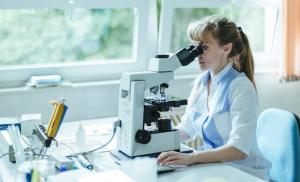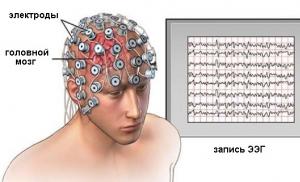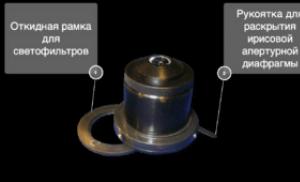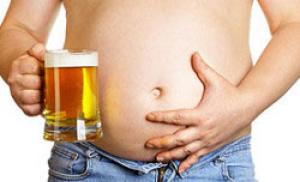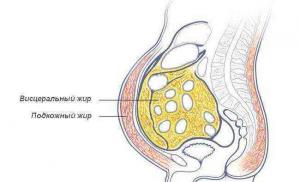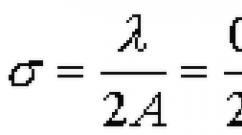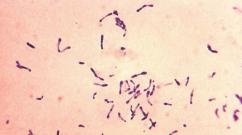When you sit, it hurts a lot in the perineum. Perineal pain in men: causes, symptoms and treatment
Pain in the perineal region occurs regardless of gender. The symptom is provoked by pathologies of the genitourinary sphere, rectum and anus, spine. The feeling that the perineum hurts is observed with tissue damage - bone, nervous, skin, muscle, fat, connective. The process can be traumatic, inflammatory, infectious. The nature of the pain and other manifestations helps to determine the specific disease.
Sections of the article
1. Perineal trauma
Soreness in the perineal region is often the result of trauma. The most common of these are contusions. Sports training, falls, hitting the genitals or perineum are the main causes of perineal injuries.
With a severe bruise in the perineum in both men and women, there is a sharp, bright pain. A tumor appears on the soft tissues, a bruise forms. The formation of a wound is possible, the occurrence of bleeding from it. The victim complains of loss of sensation in the injured area of the perineum... There may be an increase in body temperature, which indicates the onset of inflammation in the perineal region.
Features of treatment determine the nature of damage to the perineal area, the presence of complications. Requires antiseptic treatment of the site of injury, surgical suturing of the wound. Cold compresses are used to relieve perineal pain. For treatment, antibiotics, vitamins K, P are indicated, calcium chloride is prescribed.
2. Acute hemorrhoids
A disease in which the perineal area hurts - acute hemorrhoids. Its main features include pain. It is characterized as strong, intense, prolonged, significantly increasing at the time of defecation and after the process of bowel movement. The place of dislocation of pain is the anal region, perineum. Other symptoms that indicate hemorrhoids are the sensation of a foreign body in the rectum, the formation of hemorrhoidal cones, their prolapse from the anus, inflammation, bleeding, the appearance of signs of intoxication of the body.
In the treatment of acute hemorrhoids, complex therapy is used. To get rid of pain in the anus and perineum, local remedies are needed - cold compresses, ointments with anesthetic, anti-inflammatory effect. Surgery is indicated for many patients... Regular hygiene procedures, a strict diet, and physical procedures contribute to recovery.
3. Urolithiasis
Due to the violation of metabolic processes in the organs of the urinary system, solid crystals of salt - stones are deposited. They accumulate in the bladder or kidneys, ureters.
The manifestations of urolithiasis include:
- the appearance of a burning sensation, cutting pain when urinating;
- renal colic;
- the appearance of bloody impurities in the urine.
There are discomfort in the lower back, pain occurs when walking in the perineal region. They increase with sudden changes in body position, after drinking (copious).
For treatment, conservative methods and surgical intervention (laparoscopic, endoscopic, open) are used. Prescribed drugs - antibacterial and anti-inflammatory, antispasmodics and analgesics, diuretics, vitamins (group B). It is necessary to increase fluid intake, diet.
4. Urethritis
The disease, which is characterized by the development of inflammation of the membranes of the urethra, is called urethritis. It is provoked by infections, injuries. The progression of the disease is accompanied by a symptom common to all patients - pain appears with the outflow of urine and a feverish state, the need to urinate becomes frequent.
With female urethritis, there is:
- pain in the lower abdomen, in the perineum;
- when urinating, there is a burning, pulling pain in the crotch;
- there is abundant vaginal discharge.
With the development of male urethritis, there are symptoms:
- sharp, sharp pain in the perineum at the time of urination;
- obstructed urine flow;
- the groin noticeably swells, itching, pain may be felt in its area;
- there are bloody impurities in urine, semen;
- there is a release of mucus, pus from the urethral canal.
Before the appointment of treatment, diagnostics are shown - urine analysis (microscopic and microbiological), a smear from the urethra, the sensitivity of the infection to drugs is determined. To get rid of pain in the perineum and other symptoms, therapy is needed - the use of antibacterial agents, immunomodulators, vitamin therapy. The patient's urethra is washed with antiseptic solutions.
5. Pinched pudendal nerve
Injuries to the pelvis and perineum, growth of neoplasms, increased muscle tone and spasms, the consequences of infectious diseases can be factors that can cause pinching of the pudendal or pudendal nerve. The main symptoms of this phenomenon include:
- aching pain appears in the pelvic region;
- persistent discomfort in the anus remains;
- in the groin, perineum, there is a feeling of a foreign object, burning;
- the tissues of the perineum become noticeably sensitive, hurt from any impact;
- possible involuntary urination;
- after sex the perineum hurts.
A pinched pudendal nerve in women is often accompanied by severe itching, a burning sensation in the genitals.
Complex therapy is used to eliminate nerve inflammation, perineal pain and other manifestations. Anticonvulsants, anesthetics, hormonal agents, muscle relaxants, and vitamin complexes are used. Medicines are given by injection, orally, rectally, or vaginally. Physiotherapy is used. In difficult cases, surgical treatment is required - an operation to decompress the compressed pudendal nerve.
6. Inguinal hernia
Heredity, special anatomy of the muscle tissue of the abdominal wall, excess weight, trauma, insufficient or excessive force loads are the main causes of an inguinal hernia. To understand that a hernia has appeared, the main signs help:
- the appearance of a seal in the groin, which becomes noticeable, bulges out with any tension;
- if you press the seal, it retracts into the tissue of the peritoneum, often with a characteristic "rumbling" sound;
- pain appears in the perineum, gives to the lower back.
Depending on the location of the hernia, pain during urination and frequent urge to urinate may appear, constipation, and increased gas production are possible. Menstruation becomes painful in women.
An inguinal hernia begins to hurt intensely when it is infringed... The formation becomes very dense, it is impossible to set it into the peritoneum. The patient is intoxication of the body, the signs of which are nausea, vomiting, and the temperature rises. The perineum hurts badly.
An inguinal hernia is not treated with medication. It needs to be surgically removed. For some patients, surgery is contraindicated. In such cases, to prevent loss, infringement of the hernia, to prevent pain in the groin area, perineum, wearing a special bandage is required.
7. Inflammation of the inguinal lymph nodes
Injuries, the spread of infection, sexually transmitted diseases, gynecological and urological problems, the occurrence of carbuncles or boils lead to inflammation of the inguinal lymph nodes - inguinal lymphadenitis. Signs help identify the disease:
- an increase in the size of the lymph nodes, possibly their redness, swelling;
- the appearance of pain when pressing on them, performing movements;
- increased body temperature, the presence of chills;
- pain in the lower abdomen, perineum;
- the appearance of discomfort, burning, discharge from the genitals.
The zone of spread of painful prolapse, except for the perineum, is the groin area, in places where the inflamed lymph nodes are located.
Features of drug therapy depend on the characteristics of the infectious process. Antibiotics, antimycotic or anti-inflammatory drugs are prescribed. During the treatment period, much attention is paid to the restoration of immunity - immunostimulants and vitamins are used. For tissue regeneration, physiotherapy is indicated - treatment with ultrasound, ultraviolet light. With purulent lymphadenitis, surgical intervention is necessary.
8. Prostatitis
In men, pain in the perineal region often occurs due to a urological disease - prostatitis or inflammation of the prostate gland. The presence of a focus of infection in the body, trauma to organs or tissues of the small pelvis, overweight, insufficient physical activity, frequent hypothermia, decreased immunity provoke the development of this dangerous male disease. Prostatitis can be acute or chronic.
The acute form of pathology is characterized by the presence of symptoms:
- headaches, weakness, fatigue are observed, such signs become stable;
- there is pain in the perineum and groin, it becomes bright when visiting the toilet;
- urinary emptying does not occur completely;
- there is a problem with an erection;
- the man becomes irritable, nervous.
Chronic prostatitis features:
- pain in the perineum is mild, quickly passes;
- pain is felt in the groin, pubic area;
- when urinating, the urine pressure becomes weak;
- the time required to visit the toilet increases, there is a feeling of incomplete urine output from the body;
- the time between trips to the toilet decreases;
- in the morning there is discharge from the urethra, urine is with white flakes;
- there are sexual problems.
The nature of the manifestation of pain in prostatitis is often different. Patients complain of sudden, shooting pains or prolonged soreness, which may suddenly stop. Perineal pain often becomes unbearable when urinating. The sensation is also localized in other places - in the genitals, lower back, sacral region, anus, buttocks, legs.
An integrated approach is used to treat patients with prostatitis.... Treatment with drugs involves the appointment of antibiotics, anti-inflammatory (non-steroidal) drugs, angioprotectors, alpha-blockers, drugs that affect urate metabolism, antidepressants, immunostimulants and drugs of other groups. Physiotherapeutic methods, surgical intervention are used.
9. Inflammation of the fallopian tubes
The inflammatory process in the fallopian tubes is called salpingitis. It is associated with the penetration of infection into them through the genitals, vagina or abdominal cavity.
Signs indicate pathology, the peculiarities of their appearance depend on the form of the disease, the pathogen that caused the infectious process, the presence of other diseases of the female reproductive system. The main signs of salpingitis include:
- the lower abdomen can pull;
- pain is localized in the groin area, perineum, it can be left or right-sided, discomfort can affect the lower back;
- vaginal discharge appears (purulent, curdled, foamy, watery).
Patients have complaints that cramping pains occur in the perineal region. Burning, itching appears in the perineum. The pain becomes especially intense during sexual intercourse.
Antibiotics are prescribed to treat salpingitis. Anti-inflammatory drugs, antipyretics help to get rid of pain in the perineum. Immunomodulators are shown. Surgical removal of the damaged portion of the fallopian tube is used.
Which doctor should you visit when a symptom appears?
If a man or woman notices that there is a painful sensation in the perineum, it is prohibited to postpone a visit to a medical facility. A symptom may indicate the development of a number of pathologies that can cause a significant deterioration in health for a long period, proceed with serious complications. It is impossible to independently determine the cause of the pain, and it is dangerous to ignore the situation when the perineum hurts.
If the perineum hurts, you should make an appointment with a therapist, urologist, gynecologist, surgeon... After examining the patient, the doctor will refer him to diagnostic procedures, prescribe laboratory tests. For patients, you may need to see other specialists:
- traumatologist;
- dermatologist;
- venereologist;
- andrologist;
- neuropathologist;
- proctologist;
- endocrinologist;
- oncologist;
- allergist;
- infectious disease specialist.
Treatment of a disease accompanied by pain in the perineum begins only after confirmation of the exact diagnosis.
Other causes of perineal pain
The list of diseases when the perineum hurts in a man or a woman also includes:
- intestinal obstruction;
- oncological processes;
- diseases transmitted through sexual contact (gonorrhea, trichomoniasis);
- condylomatosis, the presence of papillomas in the perineal region;
- anal fissure;
- proctitis or paraproctitis;
- cystitis;
- the formation of boils;
- osteochondrosis.
One of the "common" diseases is cooperitis or inflammation of the cooper gland. The main complaint during its development is that the perineum hurts after sex, there are other signs.
There are "male" pathologies when the perineum hurts:
- cyst, abscess, prostate tumor;
- torsion of the testicle;
- varicocele;
- epididymitis;
- the presence of cystic formations in the genitals.
Women experience perineal pain if:
- ectopic pregnancy;
- active growth or rupture of a cyst in the ovary;
- varicose veins of the perineum;
- endometriosis.
Symptom pain in the perineum accompanies the period of pregnancy, labor, pain persists after childbirth.
Why is pain in the perineum dangerous?
The perineum of people of different ages and genders can hurt for many reasons. The most "harmless" prerequisites for the occurrence of discomfort are external causes - prolonged exposure to low temperatures, unhealthy diet, insufficient physical activity. The perineum may hurt after intercourse, when the partner's organs are injured. It is these factors that can provoke the development of pathological processes, dangerous diseases..
Pain in the perineum indicates inflammatory processes in the genitals, urinary organs, intestines, and tissues that form this part of the body. The symptom is often associated with the development of neoplasms - cysts, cancerous tumors, metastases. If you ignore such diseases, do not perform the necessary diagnostic and therapeutic procedures at the moment when the perineal area begins to hurt, the consequences can be negative - a significant deterioration in well-being, the death of a person.
The perineum is the area in which the external genitalia, urethra and anus are located.
Pain in the perineum and anus is caused by pathological conditions that develop in organs located nearby.
Causes of pain in men and women
The causes of perineal pain in men may be associated with the development of the following diseases:
- acute or;
- abscess of the prostate gland;
- oncological pathology of the prostate gland;
- adenoma of the prostate gland;
- cysts of the prostate gland;
- urethritis;
- couperite;
- edididymitis;
- cysts in the testicle, epididymis, spermatic cord.
Discomfort during and after pregnancy

In women during pregnancy, after 35-38 weeks, the fetus begins to descend, moving to the exit hole. Sharp pains radiating to the perineum are caused by an increase in the pressure of the growing fetus on nearby organs, including muscles.
Sometimes during pregnancy in women, the fetus occupies a position that causes compression of the nerve passing near. In this case, the pregnant woman feels strong stabbing manifestations that interfere with normal movement.
Discomfort may be present. The intensity of pain differs from woman to woman. This is influenced by the presence of a perineal injury received during labor.
If it was not there, the discomfort disappears after 2-3 days, but if there is a rupture, the pain is present much longer. In addition, in women, a symptom can signal an inflammatory process in the uterus, appendages, and vagina.
Types of pain

You can determine the source of pain in the perineal area in women and men by its type:
- Stitching pain. In a man, this may indicate the development of acute prostatitis, in which discomfort radiates to the sacrum area, the head of the penis, the anus, as well as prostate abscess, acute urethritis (pain syndrome increases in intensity after urination). The stabbing discomfort in a woman indirectly indicates that the nerve is pinched, the perineum is injured, and cystitis and urolithiasis develop.
- Aching, pulling syndrome. Talking about chronic diseases.
- Acute pain symptoms. It is more often present in women and signals the development of colpitis. If abdominal pain is given to the perineum, this indicates bowel disease.
Discomfort after sex is a symptom of a pathology with an infectious etiology, indicating the presence of a cyst, an abscess in the genital organ (in a woman), and insufficient relaxation during intercourse.
If a child has pain

Ka and in adults, pain in the perineum in children is a symptom of a certain disease. In boys, it can be, in girls - inflammatory processes of various etiologies.
Self-medication of a symptom in a child is strictly prohibited. The use of potent drugs can cause serious damage to health, and the problem lies only in a banal increase in gas production.
Only a specialist will determine the true cause of the discomfort, as well as prescribe an effective treatment.
Associated symptoms




The nature of the accompanying symptoms depends on the primary disease. In men, these include:
- hyperemia of the skin;
- pain syndrome that occurs at the time of urination;
- pain syndrome localized in the lower abdomen;
- pain syndrome that occurs during physical exertion;
- pain syndrome that occurs during sex.
In women, the accompanying symptoms are:
- increase or decrease in menstrual bleeding;
- the presence of uterine bleeding;
- pain syndrome like colic in the lower abdomen;
- pain syndrome that occurs during or after sex.
Diagnostic measures

It is possible to determine what is the source of the development of discomfort only by the results of the diagnostic measures taken. It is necessary to visit a therapist who, if necessary, will refer you to a specialized doctor: urologist, gynecologist, proctologist, oncologist, etc.
The doctor prescribes laboratory, instrumental activities:
- general clinical analysis of blood and urine;
- diagnostics of the biomaterial taken from the vagina (or urethra) for pathogenic microflora;
- biochemical blood test;
- a blood test for the level of tumor markers and hormones;
- stool microscopy;
- X-ray and ultrasound diagnostics of a specific organ;
- colonoscopy and sigmoidoscopy;
- irrigoscopy and gastroscopy;
- cystography, FGDS;
- computed and magnetic resonance imaging.
Also, the doctor collects information about the duration of the onset of the symptom, its nature, frequency of occurrence, and the intensity of discomfort. Find out what concomitant symptoms are present, as well as diseases of the pelvic organs.
Palpate the rectum, the lower abdomen, which makes it possible to identify pathological neoplasms.
Treatment

Therapy for perineal pain is assigned to different specialists, depending on what disease caused it. Which doctors should I contact:
- if discomfort manifests itself some time after the postponed injury or labor - to the surgeon;
- if the pain was preceded by an injury - to a traumatologist;
- in the presence of a boil or papilloma - to a dermatologist;
- in the presence of allergic symptoms - to an allergist or dermatologist;
- in case of pain at the time of urination - to a urologist or gynecologist;
- with discomfort, which is complemented by a burning sensation, numbness of the femoral region - to a neurologist;
- with concomitant pain in the lower abdomen during emptying - to the proctologist;
- in case of discomfort during pregnancy - to the gynecologist;
- with specific discharge from the genitals, a rash on the skin - to a venereologist, gynecologist, urologist.
Inflammatory processes are treated with anti-inflammatory and antibacterial drugs. Neoplasms present in the genitals require surgical intervention.
How to prevent pain

It is possible to prevent the appearance of pain in the perineal region by observing preventive measures against provoking diseases.
General preventive measures include:
- limiting hypothermia of the body;
- the use of barrier contraceptives during sex;
- observance of personal hygiene of the external genital organs;
- regular visits to a specialized doctor (urologist, gynecologist) for the timely detection and treatment of diseases.
Conclusion
The reason to see a doctor is vaginal (urethral) discharge with a specific odor, severe pain that cannot be stopped by conventional analgesics. The prognosis of the underlying disease directly depends on the timeliness of the visit to the doctor.
Pains and their causes in alphabetical order:
pain in the perineum
Under the perineum, perineum, in the narrow sense of the word, we mean the area of tissue between the anterior edge of the anus and the posterior edge of the external genital organs or parts (the root of the scrotum in men, the posterior edge of the genital slit in women).
In topographic anatomy, the perineum, perineum, is the area of the exit of the small pelvis. The area is occupied by the external genitals and the anus of the rectum. The crotch area is diamond-shaped; in front, it extends to the lower edge of the pubic symphysis, in the back - to the apex of the coccyx and on the sides it is bounded by the pubic and ischial bones and sacro-tuberous ligaments, ligg. sacrotuberalia, separated from the thigh by the femoral-perineal fold.
Perineal region, regio perinealis. forms the bottom of the pelvis, thereby closing the exit from the latter, and is subdivided into the anterior, smaller, urogenital area, regio urogenitalis, and the posterior, large, anal area, regio analis. The exit from the pelvic cavity is closed by muscles, fascia, fat and skin, which are differently located in each part of the perineum. Slightly convex anteriorly, the line connecting the right and left ischial tuberosities, and is the border of these two areas. Located along the mid-sagittal line, the skin fold, suture, raphe, perineum, as it were, divides the skin of this area into the right and left halves. In the genitourinary region, regio urogenitalis, are the external genitalia, the urethra and the urogenital diaphragm, diaphragma urogenitale. The urethra passes through the urogenital diaphragm in men, and the urethra and vagina in women.
For what diseases there is pain in the perineum:
The main causes of perineal pain are:
1. Pain or any discomfort in the perineum almost always indicates problems with the prostate gland, most often - about chronic prostatitis or seminal vesicles. Painful irritations from the prostate gland and the posterior part of the urethra are transmitted along the sacral nerves. Localization of pain - in the perineum, rectum.
When such symptoms appear, it is imperative to contact and be examined by a urologist.
2. Pain in the perineum after natural childbirth is most likely aggravated in cases where the perineum was torn or was cut during an episiotomy and then sutured.
3. In acute urethritis, pains are sharp and painful, in chronic urethritis they are less severe and are perceived as a burning sensation. The pain may not be associated with the act of urination and may be permanent - this is usually the case with colliculitis (that is, inflammation of the seminal tubercle in the posterior urethra). Pain in diseases of this part of the urethra is localized in the perineum.
4. Pain in the perineum is typical for diseases of the prostate gland. In acute prostatitis, the pain is sharp, pulsating in nature, given to the anus, sacrum, glans penis. In chronic prostatitis, the pain is not intense, long-lasting and pulling in nature.
5. Ulcers (abscesses) occur more often in isolation in one lobe of the prostate gland, while the pain is most disturbing on the affected side. Almost always stool is delayed, gas does not go away, urination is difficult. In the stage of active formation of an abscess, severe pain in the perineum is observed, radiating to the sacrum, inner thighs, rectum with high body temperature.
6. Inflammation of the bulb-urethral gland (cooperitis) most often accompanies urethritis of any origin, since the infection enters these glands directly from the urethra. If the outflow of secretion from the bulbous-urethral gland during its inflammation is not disturbed, then the patient feels moderate pain in the perineum, especially in the sitting position and during the act of defecation.
If the outflow of secretion is difficult, the gland suppuration occurs, the pain in the perineum and at the root of the penis sharply increases, the body temperature rises, and there may be chills.
7. Traumatic injuries of the urethra and prostate gland:
- Closed damage to the urethra occurs most often as a result of the direct impact of traumatic force on the urethra (fracture of the pelvic bones, falling onto the perineum, forced introduction of a metal catheter, bougie or cystoscope, birth trauma, prostate surgery, etc.). Distinguish between bruise, incomplete rupture, or tear, and crushing of the urethra. The main symptoms are shock, dull pain in the perineum, scrotum, sharp pain in the urethra, urethrorrhagia, acute urinary retention, frequent unsuccessful urge to urinate, bladder hyperextension, hematoma and urinary leakage on the perineum, scrotum, hips.
- Open injuries of the urethra are divided into isolated and combined (gunshot, stabbed, cut, bruised, torn, bitten). Stab wounds are localized in the perineal region, and the penis is also damaged. Cut wounds can be complete or incomplete, and with bite wounds, it is mainly the spongy part of the urethra and the penis that is damaged. These injuries are manifested by acute urinary retention, frequent urge to urinate, urethrorrhagia, pain in the perineum and lower abdomen, an increase in the bladder, urine discharge from the wound during urination.
- Among the closed injuries of the prostate gland and seminal vesicles, bruises and ruptures are distinguished, which often occur with fractures of the ischial bones, a strong blow to the perineum, falling on a solid object, as well as with forced or incorrect introduction of metal catheters, bougie, cystoscopes into the urethra. Clinically, this type of injury is manifested by pain in the lower abdomen, in the anus and perineum, frequent painful urination, micro- or macrohematuria, hemospermia.
- Among open injuries of the prostate gland and seminal vesicles, bruises, tangential, blind and perforating wounds are distinguished. The most common are gunshot and stab wounds, usually combined. Patients complain of pain in the perineum, urethrorrhagia and dysuria. Possible tamponade of the bladder with blood clots, urinary infiltration, urine excretion through the rectum or perineum. The diagnosis is made on the basis of anamnesis data, clinical presentation, results of rectal examination, urethrography. Treatment consists in primary surgical treatment of the wound, stopping bleeding, removing foreign bodies and hematomas.
8. Tears of the perineum during childbirth
Scar tissue formed when the perineum is torn or cut during childbirth. Almost all women who have undergone such an intervention experience pain in the perineum during penetration and during intercourse for about three months.
9. Pinching of the pudendal nerve, which can occur suddenly or develop over time. Long sitting, cycling. repetitive movements and leg exercises can pinch the pudendal nerve.
Some people have predominantly rectal pain, sometimes with bowel problems. Others have pain in the perineum or genitals. Symptoms may include stabbing, cramping, or burning pain, tingling, numbness, or tenderness. Symptoms usually get worse while sitting and better when standing or lying down. There may be a feeling that the person is sitting on a bump.
10. With prostate cancer, pain in the perineum is observed, which can radiate to the sacrum, lower back and thighs.
Which doctor should i contact if there is pain in the perineum
Are you experiencing perineal pain? Do you want to know more detailed information or do you need an inspection? You can make an appointment with the doctor Eurolab always at your service! The best doctors will examine you, study the external signs and help identify the disease by symptoms, advise you and provide the necessary assistance. you also can call a doctor at home... Clinic Eurolab open for you around the clock.
How to contact the clinic:
The phone number of our clinic in Kiev: (+38 044) 206-20-00 (multichannel). The secretary of the clinic will select a convenient day and hour for you to visit the doctor. Our coordinates and directions are indicated. Look in more detail about all the services of the clinic on her.
(+38 044) 206-20-00
If you have previously performed any research, be sure to take their results for a consultation with your doctor. If the research has not been performed, we will do everything necessary in our clinic or with our colleagues in other clinics.
Does your perineum hurt? You need to be very careful about your overall health. People don't pay enough attention symptoms of diseases and do not realize that these diseases can be life-threatening. There are many diseases that at first do not manifest themselves in our body, but in the end it turns out that, unfortunately, it is too late to treat them. Each disease has its own specific signs, characteristic external manifestations - the so-called disease symptoms... Identifying symptoms is the first step in diagnosing diseases in general. To do this, you just need to several times a year. be examined by a doctor, in order not only to prevent a terrible disease, but also to maintain a healthy mind in the body and the body as a whole.
If you want to ask a question to the doctor, use the section of the online consultation, perhaps you will find answers to your questions there and read self-care tips... If you are interested in reviews of clinics and doctors, try to find the information you need on. Also register on the medical portal Eurolab to be constantly updated with the latest news and information updates on the site, which will be automatically sent to your email.
The symptom map is for educational purposes only. Do not self-medicate; for all questions regarding the definition of the disease and methods of treatment, contact your doctor. EUROLAB is not responsible for the consequences caused by the use of the information posted on the portal.
If you are interested in any other symptoms of diseases and types of pain or you have any other questions and suggestions - write to us, we will definitely try to help you.
The situation when it hurts between the legs of a man is rather unpleasant. Most often, perineal pain is caused by inflammatory diseases of the genitourinary system. But also the causes of discomfort can be hypothermia or pathologies of a non-infectious nature (for example, hemorrhoids, appendicitis).
Have you had a full medical examination in the last 5 years?
YesNo
Similar symptoms indicate diabetes mellitus, cirrhosis of the liver, hepatitis and other dangerous disorders.
Trauma
Sharp painful sensations appear after mechanical damage. These include:
They occur during shocks, accidents, damage at work, during sharp inaccurate frictions during sexual intercourse or masturbation. A long period of persistent pain after surgery signals the development of complications.
Diseases of the genitourinary system
Cutting pains in the perineum in men when walking indicate the presence of kidney stones. Their intensity increases when foreign inclusions enter the urethra. Discomfort is triggered by pelvic inflammatory disease, which is often caused by infections.
Prostatitis
Acute prostatitis is characterized by sharp pains in the perineum, aggravated by urination. They often pass into the penis, anus, rectum, and sacrum. Signs of a viral infection appear:

In chronic prostatitis, the pain is not so strong, but it can increase with erection, ejaculation, stress, hypothermia, and the use of large doses of alcohol. If the cause of the development of inflammation of the prostate was an infection, then it is observed. Prostatitis of a non-infectious nature can be determined by the localization of discomfort in the pelvic region. The pains are aching, smeared, periodically disappearing and arising again. Constant unbearable soreness can be a sign of prostate cancer.
Sexually transmitted infections
Painful sensations are often accompanied by itching, burning sensation when urinating, discharge, and various types of rashes. Common infections are:
- genital herpes. Burning sensation occurs after spontaneous opening;
- gonorrhea. Burning and itching worse when trying to cope with small need. At the end of the process, blood is released.
- trichomoniasis. Resis are felt both during urination and during sexual intercourse. Gradually joins discomfort in the perineum, testicles, scrotum. There is pain during bowel movements;
- chlamydia. Burning sensation in the urethra after ejaculation. Microbes can infect the prostate gland, so symptoms of prostatitis may occur;
- urethritis. With inflammation of the urethra, pain and burning sensation appear when urinating.
Abscess, prostate adenoma and cysts, orchitis, testicular and spermatic cord cysts, vesiculitis and many other pathologies that cause perineal pain in men should be excluded.
Nervous system disorders
 Pain from the perineum can radiate to the groin area. This symptom is encountered by men whose professional activities are associated with heavy loads. Discomfort worries athletes, loaders, drivers. Due to the weakness of the abdominal muscles, an inguinal hernia can come out, clearly visible in a standing position. The protrusion of the internal organs is easy to feel on your own. The main symptoms of a hernia are repositioning inward with light pressure. Acute pain is often caused by impingement of the organ, which can only be corrected by surgery.
Pain from the perineum can radiate to the groin area. This symptom is encountered by men whose professional activities are associated with heavy loads. Discomfort worries athletes, loaders, drivers. Due to the weakness of the abdominal muscles, an inguinal hernia can come out, clearly visible in a standing position. The protrusion of the internal organs is easy to feel on your own. The main symptoms of a hernia are repositioning inward with light pressure. Acute pain is often caused by impingement of the organ, which can only be corrected by surgery.
Osteochondrosis of the lumbar spine
A disease characterized by abnormalities in the structure of cartilage and bone tissue. Makes itself felt with severe back pain or a slight sensation of discomfort. Often, the vertebral discs compress the nerve endings of the spinal cord, which causes acute pain in the perineum.
Infringement of the pudendal nerve
Severe paroxysmal pain and burning sensation in the perineum in men when sitting and lying down is localized in the pelvis. The discomfort subsides if the person stands calmly. Soreness increases with physical exertion. In this case, numbness of the local areas of the thigh is observed.
It is important to remember that pain, burning and any other unpleasant sensations signal a malfunction in the body. Therefore, if discomfort occurs, it is worth contacting a urologist for an examination and taking tests. It is possible that you will have to visit a proctologist, neurologist, oncologist and dermatologist to make an accurate diagnosis. If you listen to the body in time, you will be able to avoid many complications.
 Is a weak stream of urine in men normal or a wake-up call?
Is a weak stream of urine in men normal or a wake-up call?  What can cause pain in the tailbone in men?
What can cause pain in the tailbone in men?  What usually hurts in the left side in men?
What usually hurts in the left side in men?
Crotch- This is a diamond-shaped area between the anus and the genitals.
Perineal pain in women is a symptom of many different pathological conditions.
The perineum is where most of the pelvic muscles are attached.
Therefore, it has many sources of reflected pain (i.e., arising in women in a different place, the pain radiates to the perineum).
Characteristics of perineal pain in women
When making a diagnosis, the doctor pays special attention to the characteristics of pain sensations, establishing their type:
- acute (lasting up to several hours and a sudden onset) or chronic, bothering patients for several months;
- rather mild or very painful;
- do not change their intensity and worsen in sitting / standing positions, when cycling;
- sharp, aching, pulling, etc.;
- spilled and localized, etc.

Causes of perineal pain in women
In women, causes of a condition such as perineal pain include:
- gynecological;
- urological;
- neurological;
- vascular, etc.
Acute sharp pain in the perineum in women, which is associated with gynecological problems, may result from:
- inflammatory diseases of the uterus;
- acute vulvovaginitis;
- inflammation of the Bartholin glands;
- injuries or surgical interventions in the pelvic area, etc.

Pain in the perineum in women it is also associated with inflammation of the urethra and rectum.
With infectious (bacterial, fungal, viral) diseases.
With skin diseases (boils, benign formations).
With the manifestation of chronic pelvic pain syndrome.
Pulling pain in the perineum in women often characterize the course of a chronic process.
The same chronic urethritis, proctitis, etc.

Aching pain in the perineum in women normally can be observed in the postpartum period, with ovulation.
Such pains tend to spontaneously decrease in intensity.
Ovulatory pain can be one-sided.
For example, pain in the perineum on the right in women for 2 to 3 days in the middle of the menstrual cycle.
Pain in the perineum in women during pregnancy
Painful sensations in the last weeks of pregnancy are also common.
When the sagging fetus puts pressure on the surrounding tissue, the pelvic bones begin to move apart.

Most often, such manifestations are stabbing in nature.
More intense pain is noted when a pregnant woman has varicose veins.
Sharp pain in this area during pregnancy can be caused by compression of the passing nerve by the fetus.
The discomfort just before childbirth intensifies.
In the postpartum period, perineal pain is experienced by almost all women who have given birth.
More intense symptoms are associated with trauma during childbirth, less intense - with edema, tissue overstretching.
Tears, sutures lengthen the period of pain persistence.
Chronic pelvic pain syndrome in women
With this syndrome, persistent pain in the lower abdomen is given to the groin and perineum.
At the same time, it is not possible to identify the organic cause of the condition.
Soreness in the perineum has a shooting, pulling character.
Pelvic inflammatory disease (PID)
PID is a whole group of diseases.
Includes pathologies such as salpingitis, oophoritis, endometritis, pelvic peritonitis, tubo-ovarian abscess.
With this pathology, pain in the lower abdomen, often associated with menstruation, radiates to the perineum, as well as the sacrum and lower back.
In the perineum, itching, fever, and distention may be felt.
Vulvovaginal pain
Vulvovaginal pain that can radiate to the perineum includes:
- vulvodynia - a pathology with unexplained pain in the vulva;
- dyspareunia - pain during intercourse;
- vaginismus - painful muscle contractions at the entrance to the vagina;
- pain associated with PID, injuries, neoplasms and other diseases.
Coccygodynia
Coccygodynia is pain in the coccyx, often associated with hypertonicity of the pelvic floor muscles and is usually caused by nerve injury.

One of the manifestations of the condition is a spasm of the muscles of the perineum.
Forces patients to use special soft pillows if long sitting is necessary.
Causes of pain and discomfort in the perineum in women
A woman may encounter such unpleasant sensations in the perineum as itching, burning of the perineum, a crack, a feeling of fullness, pressure, sharp or aching pain. There are many pathological changes in the body that cause these symptoms. Also, discomfort in the perineal region in certain cases may be the norm.
Pregnancy
During pregnancy up to 20 weeks, the discomfort of a woman's perineum should be an alarming factor, as it can signal the possibility of a miscarriage. Especially if the discomfort is accompanied by bloody discharge. During this period, the fetus is still very small and its movements are in no way perceptible to a woman. Therefore, any mechanical action by the fetus on the perineal area is excluded.

After 20 weeks, the baby in the womb grows and develops intensively. The mobility of the arms and legs becomes more active and stronger. Baby's movements are most often the cause of short-term, acute, but not severe pain, a feeling of pressure in the perineum.
As the happy moment of childbirth approaches, the discomfort in the perineal area can increase significantly. The reason is a fairly large volume and weight of the fetus, which presses on the internal organs, muscles and bones of the woman. The severity in the perineal area is especially exacerbated in the last days before childbirth, due to the expansion of the pelvic bones. This process is provided by nature to facilitate childbirth, both for the baby and for the mother.
Due to the growth of the fetus, the sciatic nerve can be pinched, which is often the cause of severe pain. Doctors recommend enduring this discomfort without applying treatment. After giving birth, everything is normalized.
Birth trauma of varying degrees
The most common cause of perineal discomfort in women is postpartum injuries:
- external tears of the tissues of the perineum in the process of passing through the birth canal of the head of the child. The reason for this may be insufficient elasticity of the muscles of the perineum or very quickly passing childbirth. Hygiene procedures, urination is accompanied by a burning sensation in the perineum.
- forced incisions of the muscles of the perineum during delivery are carried out by the doctor to prevent rupture and facilitate wound healing in the future.
- internal tears in the cervix or vaginal muscles. This problem occurs more often in primiparous women. The opening of the cervix takes longer, the muscles of the vagina are inelastic. Stretching can begin with incomplete opening, resulting in tears and cracks in the tissues, causing pain and burning throughout the perineal region.
Doctors recommend starting sex life 2 months after complicated childbirth. Resuming an intimate relationship with a partner earlier can cause infection to enter unhealed wounds. This leads to a recurrence of inflammation of the perineal tissue.
A woman who has given birth may experience discomfort, a burning sensation and discomfort for a while, until the wounds are completely healed and the stretched muscles and ligaments are restored. In the normal course of this process, the inflammation of the perineum goes away.
Infectious and inflammatory diseases
Itching, burning, discomfort of the perineum of women can be caused by such inflammatory diseases:

- colpitis (vaginitis) - inflammation of the vaginal walls is accompanied by pathologically strong discharge and stitching pains, burning sensation both in the perineum and in the vagina itself.
- bartholinitis - inflammation of the glands at the entrance to the vagina and providing it with lubrication. The inflamed and swollen tissues of certain parts of the perineum block the exit of the secretion of the glands, which causes stagnation and the formation of pus. The infection passes to the gland itself, an abscess is formed. A burning sensation in the perineum with inflammation of the Bartholin glands occurs when walking, when stool comes out, during intercourse and subsides a few hours after intercourse. All these symptoms are accompanied by an increase in temperature. Interestingly, an abscess can open up without treatment on its own. This often leads to recovery.
- inflammation and fissures of the rectum are accompanied in most cases by diseases of the gastrointestinal tract. The consequence of this becomes, irregular bowel movements (diarrhea or constipation), due to which trauma to the excretory passage occurs, there are acute pains and burning sensation in the perineum. Treatment of rectal fissures primarily consists in the diagnosis and treatment of the underlying disease. To relieve symptoms, relieve inflammation, eliminate discomfort, suppositories and laxatives are prescribed that thin feces.
- genital herpes causes characteristic rashes on the genitals. The rash is fluid-filled blisters that burst over time. The ulcers formed in the perineum then heal, becoming covered with crusts. With the progression of the disease, there is a burning sensation of the perineum and the area of the rash, severe itching.
Chronic pelvic pain
It is important to pay special attention to the fact that such a syndrome is a symptom of a number of diseases and is accompanied not only by discomfort in the perineum of women, but also causes pain in the buttocks, lower back, and lower abdomen. The presence of the syndrome is a good reason to go to the doctor to find out the true reasons, which may be:
- diseases of the gastrointestinal tract;
- diseases of the genitourinary system;
- disorders and pathologies of the structure and articulation of the pelvic bones;
- tumors;
- depressive state after suffering violence, severe stress.
Pinching of the pudendal nerve (neuropathy)
The genital (pudendal) nerve is located in the perineum and provides a connection between the organs and tissues of the small pelvis with the central nervous system. Its infringement causes an unexpected sharp painful attack in the perineum when walking, sitting or lying down. At rest, it disappears. When the pudendal nerve is pinched, the pain can go to the inner surface of the thighs and be accompanied by their numbness, sometimes there is numbness of the genitals, a deceptive sensation of discomfort and the presence of a foreign body in the rectum or vagina. Urinary incontinence may occur.
Diagnosis of the disease is carried out by the method of blockade of the pudendal nerve. The final diagnosis is made if, after the procedure, the pain symptoms in the perineum decrease, and the patient's general condition improves. Treatment is medication. If it is ineffective, you have to resort to surgical intervention.
Skin diseases
Fungus belongs to skin diseases of the perineum. The disease causes severe itching and burning in the affected area. It appears in the initial stages in the form of red spots with a clear border. The disease often develops due to non-compliance with the rules of personal hygiene. Elementary, a person suffering from mycosis of the feet can transfer the infection with his own hands or with a towel to the groin area.
Interesting video:
Perineal fungus can develop in very obese people. The existing disorders in the functioning of the pancreas and thyroid glands are also the cause of fungal infection.
Causes
- diseases of the prostate gland - prostate (in men), most often - chronic prostatitis or inflammation of the seminal vesicles;
- postoperative pain in the perineum - developing in women: after natural childbirth, with episiotomy;
- lesions of the urethra, such as acute urethritis;
- the development of abscesses (abscesses) as complications of prostatitis and other inflammatory diseases;
- defeat of one or more bulbous - urethral glands - in men (cooperitis);
- traumatic injuries of the prostate - the prostate gland and the urethra - the urethra;
- inflammation / entrapment of the pudendal nerve;
- damage to the skin in the perineum (the presence of inflammatory processes of bacterial or viral, fungal etiology);
- benign and malignant neoplasms (prostate cancer).
Classification
Depending on the cause of the pain:
- primary pain in the perineal region - occurs as a result of neurological disorders that occur at various levels;
- secondary pain in the perineal region - occurs with irradiation ("rebound") of pain attacks in the perineal region in the case of diseases of organs such as the prostate gland - prostate, uterus, bladder.
Depending on the origin of the pain:
- visceral type of pain - the main cause of this kind of pain in the perineum is irritation of nerve sensitive receptors - endings located directly in the walls of organs located in the area of its projection (most often as a result of narrowing of the vascular wall - spasm or, conversely, hyperextension, lack of oxygen - ischemia );
- psychogenic type of pain - as a rule, it occurs in the absence of one or more pathological processes or functional disorders in the projection area; occurs in persons with certain character traits; can develop as a psychological reaction to the presence of a stressful situation;
- neurogenic type of pain - the main reason for its development is damage to the nerves that innervate the perineal region; the appearance of burning and cutting pains that occur even when making light touches or changing the ambient temperature is characteristic.
Depending on the characteristics of pain:
- paroxysmal, or cramping, or spastic pains in the perineum: the leading causes are limited narrowing of the lumen (spasm), dyskinesia (violation of pathway contraction), impaired motility of the urinary tract and anus and the predominance of the spastic (due to narrowing) component of pain;
- dull, or persistent, pain in the perineum: the main causes are organ inflammation with progressive dynamics (localized in the perineal region).
Depending on the duration:
- acute type of pain in the perineum - pain, the typical temporal characteristic of which is development over several minutes or hours (but not more than a day);
- chronic type of pain in the perineum - pain, pain, the typical temporal characteristic of which is development over 3 months or more.
Depending on the type of pain:
- volatile type of pain in the perineum - its most common causes are trauma to the perineal region, urological diseases, frequent constipation; with flying pain in the perineum, spasms - contractions - of the muscles of the anus and / or perineum can often be observed,
- spastic type of pain in the perineum - pain in people suffering from intestinal diseases, for example, with alternating processes of diarrhea and constipation.
Signs
For acute or chronic prostatitis:
- fever and chills;
- local increase in body temperature;
- pain that tends to radiate to the lower back;
- lower abdominal pain;
- pain in the pelvic region;
- lumbodynia, or pain in the lumbar region;
- pain in the perineum;
- frequent nocturnal urge to urinate - nocturia;
- frequent and painful urination;
- the presence of pain in the groin and scrotal regions;
- difficulty urinating (up to acute urinary retention);
- dysuria (pain / burning sensation when urinating);
- periodic or persistent discharge from the urethra - the urethra;
With urethritis, or inflammation of the urethra:
- pain in the perineum;
- discharge of pus from the urethra - the urethra;
- painful urination;
- adhesion and redness of the edges of the external opening of the urethra;
With cuperite, or inflammation of the bulbous urethral gland:
- pain in the perineum;
- discharge from the urethra after walking;
- pain that gets worse when urinating and sitting;
- soreness when pressing on the Cooper's gland;
With colliculitis, or inflammation of the seminal tubercle - in men:
- the presence of discomfort and pain in the groin area;
- the presence of discomfort and pain in the perineum;
- sensation of a foreign body in the rectal area;
- frequent false urge to defecate;
- blood in urine and semen;
- painful urination;
- sexual dysfunction;
For acute orchitis:
- a sharp increase in body temperature;
- irradiation of pain in the groin;
- irradiation of pain to the lumbar (lumbar) region;
- enlargement of the testicle on the side of the lesion;
- smooth, hyperemic skin of the testicle on the affected side;
- pain in the perineum;
- increased pain during physical activity;
- chills and headache;
- For chronic orchitis:
- periodic pain in the testicle;
- pain in the perineum on the affected side;
With vaginitis, or colpitis, - inflammation of the vagina:
- pathological abundant discharge from the genital tract;
- persistent discomfort and / or itching in the vaginal area;
With bartholinitis, or inflammation of the glands of the vestibule of the vagina, in women:
- redness of the skin of the labia minora;
- irradiation of pain in the perineum;
- thickening of the excretory duct of the gland of the vestibule of the vagina;
For a perineal injury:
history of trauma:
- pain in the rectal area;
- pain in the perineum;
When the pudendal / pudendal nerve is pinched:
- pain in the sciatic - rectal fossa;
- pain in the perineum, two-sided or one-sided;
- pain radiating to the side, to the lower buttocks, to the inner thigh;
With an abscess of the prostate:
- high fever, accompanied by sweating, chills, frequent pulse - tachycardia;
- irradiation of pain into the rectum;
- difficulty in the processes of defecation and urination;
- unilateral localization of pain in the perineum;
- sharp, throbbing pain in the perineum;
- acute retention of stool and urine;
For prostate cancer - prostate gland:
- characteristic difficulty urinating;
- an increase in the time of urination;
- the presence of frequent urge to urinate, which does not bring relief;
- retention of urine;
- the presence of pain in the perineum of a spastic nature;
- constant feeling of incomplete emptying of the bladder;
- when urinating - an intermittent or thin stream of urine;
With boils (furunculosis):
- the appearance on the skin of changes in the form of tubercles, rashes, painful on palpation;
- pain in the perineum;
With hemorrhoids:
- rectal pain;
- hemorrhoidal bleeding;
- prolapse of hemorrhoids;
- pain in the perineum;
- bleeding after a bowel movement;
With cracks in the rectum:
- pain in the perineum;
For proctitis (inflammation of the rectum):
- pain in the perineum;
- pain in the anus and rectum;
- difficulty in the processes of defecation and urination;
With paraproctitis (inflammation of the tissue that surrounds the rectum):
- difficulty in the processes of defecation and urination;
- chronic pain in the perineum;
- the presence of a fistulous course;
For chronic pelvic pain syndrome:
- pain in the perineum;
- pain in the anus, pelvis and rectum;
- pain below the navel;
- the duration of the pain - 6 months or more;
- the pain is not cyclical.
What diseases occurs
- cooperite;
- acute or chronic prostatitis;
- urethritis;
- chronic pelvic pain syndrome;
- orchitis;
- colliculitis;
- vaginitis (colpitis);
- trauma during childbirth;
- infringement of the genital / pudendal nerve;
- prostate cancer;
- abscess of the prostate gland;
- skin diseases: condylomas, boils, papillomas; haemorrhoids;
- proctitis;
- cracks in the rectum;
- paraproctitis.
